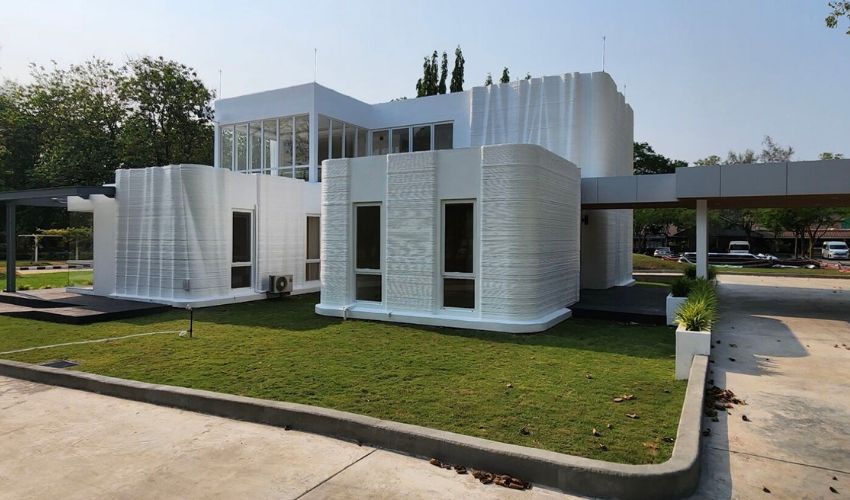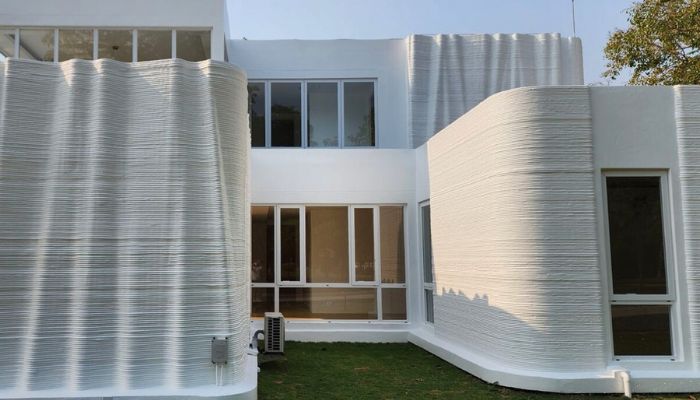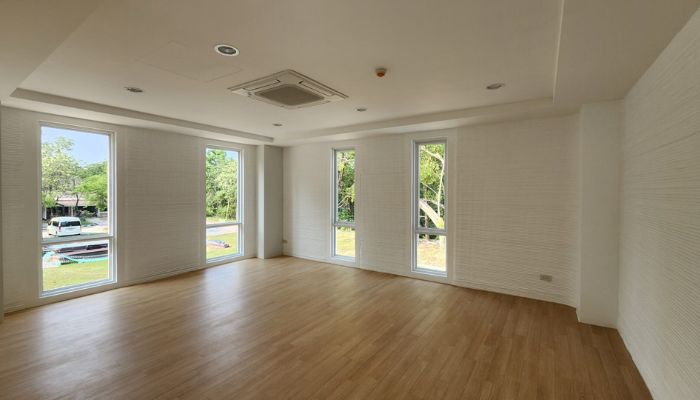The First Ever 3D Printed Medical Center Has Been Unveiled in Thailand

In a groundbreaking development, Thailand has witnessed the construction of its first-ever 3D printed medical center. This cutting-edge facility, built by SCG (Siam Cement Group) using COBOD’s BOD2 printer, showcases the immense potential of additive manufacturing in revolutionizing healthcare infrastructure. With its innovative design, improved construction speed, and cost-effectiveness, this 3D printed medical center sets a new benchmark for the future of healthcare architecture.
Traditional construction methods often struggle to keep pace with the demands of the healthcare sector. Enter 3D printing, an innovative technology that holds immense promise for transforming the industry. COBOD, a pioneer in 3D construction printing who holds the world record for fastest 3D printed building in Oman and created the first two-story 3D printed building in India, has spearheaded the construction of Thailand’s first 3D printed medical center. This advanced technology enables faster construction, cost savings, and greater design flexibility, ultimately improving patient care and well-being.

The new medical center located in Saraburi, Thailand
The 3D printed medical center in Thailand showcases the seamless integration of innovative design and construction techniques. The use of COBOD’s BOD2 3D printer, coupled with cutting-edge software, allowed for the precise layering of concrete, resulting in intricate architectural features and a striking aesthetic appeal. The modular design of the facility allows for easy scalability and customization, accommodating the evolving needs of the healthcare system.
One of the key advantages of 3D printing in healthcare construction is the significant reduction in construction time and costs. The automation of the construction process, along with precise material usage, minimizes waste and lowers expenses. With 3D printing, healthcare facilities can be built in a fraction of the time compared to traditional methods. This not only accelerates the delivery of vital medical infrastructure but also reduces disruptions caused by construction activities.

Inside the two-story medical center
The 3D printed medical center in Thailand represents a paradigm shift in healthcare infrastructure development. Beyond the speed and cost benefits, this innovative construction method offers improved sustainability by minimizing the carbon footprint associated with traditional construction techniques. The design flexibility of 3D printing enables the integration of patient-centric features, such as ergonomic layouts, efficient workflow patterns, and optimized infection control measures. This holistic approach fosters an environment conducive to patient recovery and promotes better healthcare outcomes.
Revolutionizing Healthcare Infrastructure
Thailand’s first 3D printed medical center stands as a testament to the transformative potential of additive manufacturing in healthcare. As this technology continues to advance, we can expect to witness a revolution in healthcare infrastructure globally. With its remarkable efficiency, cost savings, and patient-centric design, 3D printing is poised to shape the future of healthcare architecture, providing improved facilities for enhanced patient care. You can find out more HERE.
What do you think of this 3D printed medical center? Let us know in a comment below or on our LinkedIn, Facebook, and Twitter pages! Don’t forget to sign up for our free weekly Newsletter here, the latest 3D printing news straight to your inbox! You can also find all our videos on our YouTube channel.
*All photo credits: COBOD






